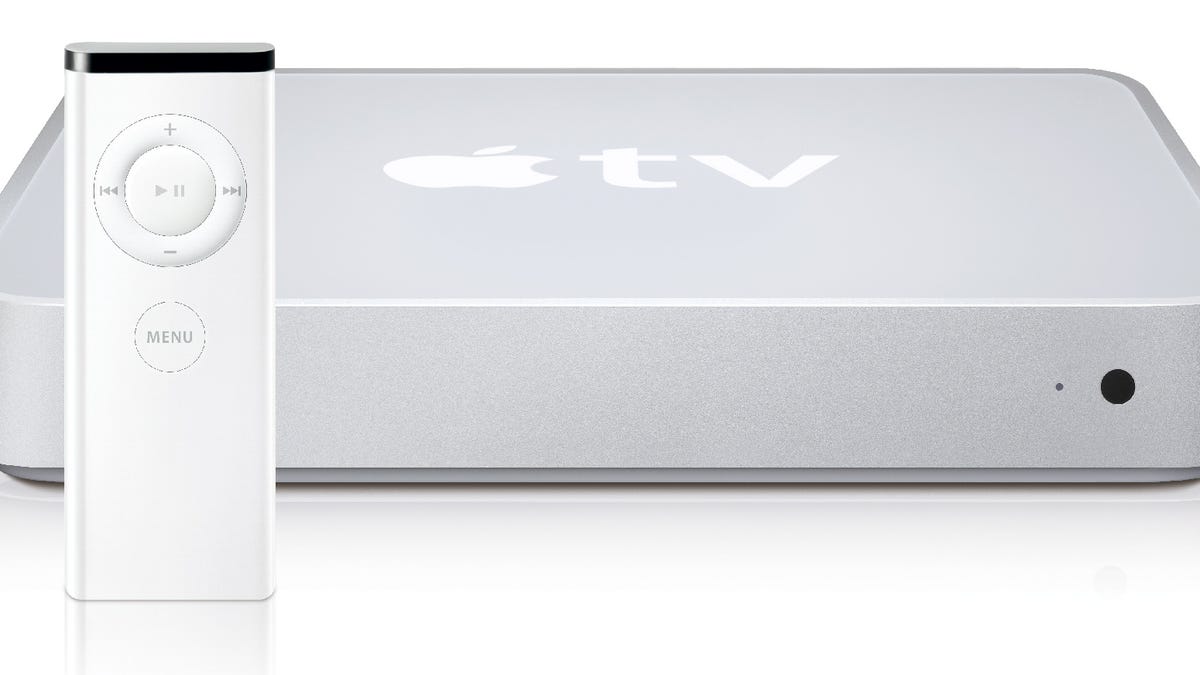DRM-free iTunes songs boost the appeal of non-Apple music streamers
If other record labels follow EMI's decision to drop DRM, the market for non-Apple music streaming products becomes a lot more attractive.

It's the digital equivalent of the first few cracks in the Berlin Wall: soon EMI will be offering the bulk of its music catalog free of DRM restrictions. Steve Jobs was on hand at the press conference to enthusiastically endorse the idea--he did, famously, suggest as much in an open letter just a few short weeks ago. But is Apple simply fashioning its own hangman's noose? If the other major record companies follow suit, the one big advantage of the entire Apple "digital ecosystem"--iTunes, the iPod, and Apple TV--essentially becomes null and void. Jobs says Apple's superior design will keep the company's software and hardware at the top of the must-have list for digital media. For the iPod, maybe--but for the just-launched Apple TV, the answer isn't as straightforward.
To be sure, there were always a handful of alternatives to Apple when it came to streaming copy-protected iTunes music--see the Linksys WMB54G or the Logitech Wireless DJ, for instance. Or take the Netgear Digital Entertainer HD--we've been testing it for the past few days, and can now confirm that it does play FairPlay-protected songs purchased from the iTunes Store when streaming from Windows PCs. Some people even have a PC or a Mac that's a dedicated iTunes jukebox, hooked directly to their stereo system. But the Apple TV eliminated the need for those competing products or work-arounds. In addition to providing an Apple-only advantage--the ability to browse and play copy-protected content purchased from the iTunes Store--the Apple TV delivered two big advantages versus other media streamers: a dead simple setup routine and a superslick onscreen interface.
The setup and interface remain best in class for media streaming devices, but today's EMI news makes compatibility with Apple's FairPlay DRM--potentially, at least--a much less compelling selling point. And that only becomes more pronounced if other labels go DRM-less. In other words, instead of being locked into just one choice, the absence of proprietary copy-protection delivers--shock!--a wider selection of possibilities when it comes to streaming your digital media over your home network. As long as the device is compatible with the file type and bandwidth of the forthcoming DRM-free iTunes format (AAC files encoded at 256kbps), it should be good to go.
We already profiled a wide array of Apple TV alternatives, but if you're not interested in streaming video or photos--and a lot of people aren't--there are several additional audio-only, non-Apple offerings that deserve your attention. The $200 Roku SoundBridge M1001 and the $300 Slim Devices Squeezebox are both excellent choices for streaming audio from your PC to your stereo system. Both models offer access to Internet radio (no PC required), and their front-panel display means you can navigate your music collection without the need to have your TV turned on. Furthermore, each offers compatibility with subscription services such as Rhapsody, so you can access literally millions of songs for a flat monthly fee ($10 for streaming, $15 if you want to load the songs onto a portable player such as the SanDisk Sansa Rhapsody). If you prefer the high end, the Sonos Digital Music System ($1,000 for a two-room setup) offers all of those same advantages of the Roku and Slim Devices, plus a multiroom-ready system that's completely accessible through its iPod-like remote control.
Of course, it's worth noting that many--if not all--of those video-enabled Apple TV alternatives will stream the same copy-protection-free AAC files as well, so those already equipped with an Xbox 360 or PlayStation 3 (for instance) may already be well equipped for a post-DRM iTunes Store. And that's not to say the Apple TV will be headed for the trash heap anytime soon--even if the music industry goes totally DRM-less, don't expect the Hollywood studios to follow suit with their downloadable TV and movie files. Still, the fact you can envision a marketplace where these products are compared based on their relative design, features, and performance--not their compatibility with some obscure proprietary encryption scheme--is a giant step in the right direction for consumers.

